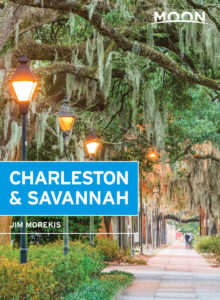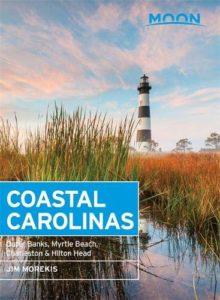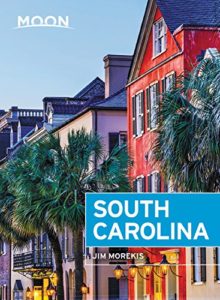Brookgreen Gardens to McClellanville
Brookgreen Gardens and Huntington Beach State Park
One of the most popular and pleasant gardens in South Carolina, Brookgreen Gardens (daily, $18 adults), 17 mi (27 km) south of Myrtle Beach, is a nonprofit 350-ac (1.4-sq-km) park on the 9,100 ac (36,826 ha) of lushly landscaped grounds of four colonial-era indigo and rice plantations. Oak trees laden with Spanish moss stand alongside palmettos, dogwoods, and azaleas, as well as hundreds of sculptures, including many done by the owner, Anna Hyatt Huntington, who developed the site in the 1930s. Alligators and otters play in the simulated swamp, and many species of birds fly around enclosed aviaries in a section of the gardens set aside as a wildlife park.
Across the highway is the 2,500-ac (10-sq-km) Huntington Beach State Park (843/237-4440, $8 adults), which sits on land carved out of the Huntington estate that is leased to South Carolina. Besides a nice beach and a popular campground, it features the Moorish-style castle called Atalaya ($2), Anna Huntington’s winter home.
Pawleys Island
South of the commercial chaos of Myrtle Beach, travelers in search of serene tranquility have long appreciated Pawleys Island. The rope hammocks for which the island is best known aptly symbolize this generally relaxed, weatherworn community, where a few traditional tin-roofed shacks mix with ever-increasing numbers of multimillion-dollar mock-antebellum mansions. The poet and novelist James Dickey, author of Deliverance, liked the island so much that he is buried in the small Pawleys Island cemetery, adjacent to All Saints Church.
Georgetown
Site of a short-lived Spanish settlement in 1526, the first European outpost in North America, Georgetown later became the rice-growing center of colonial America. Bounded by the Sampit and Pee Dee Rivers and the narrow inlet of Winyah Bay, Georgetown is one of the state’s few deepwater harbors and home to huge steel and paper mills along US-17. Its downtown district along Front Street is compact and comfortable, with dozens of day-to-day businesses and a few cafés and art galleries filling the many old buildings.
Three blocks south of US-17, at the east end of Front Street, there’s a pleasant waterfront promenade, where the clock-towered old town market now houses the small but excellent Rice Museum (Mon.-Sat., $7 adults). Dioramas trace South Carolina’s little-known history as the world’s main rice and indigo producer, a past often overshadowed by the state’s later tobacco and cotton trade. The rest of town holds many well-preserved colonial and antebellum houses, churches, and commercial buildings.
A couple of good places to eat in Georgetown include seafood specialties at the River Room (801 Front St., 843/527-4110) and the locals’ favorite Thomas Café (703 Front St., 843/546-7776), next to the Rice Museum. For more information, or to pick up a self-guided-tour map of town, contact the Georgetown County Chamber of Commerce (531 Front St., 843/546-8436 or 800/777-7705), on the waterfront.
McClellanville
South along US-17, a small sign marks the turnoff to the quaint Lowcountry fishing village of McClellanville (pop. 542). A short drive past moss-draped oak trees brings you to the town dock, where some of the last portions of South Carolina’s shrimp and crab catch get unloaded and shipped to market. But some of the local shellfish doesn’t travel far at all, ending up in the kitchens of T.W. Graham & Co. (810 Pinckney St., 843/887-4342, Tues.-Sun.), housed in a former general store just up from the docks. Graham & Co. also grills burgers and bakes great pies, so plan to stop and spend some time here.
Related Travel Map

















